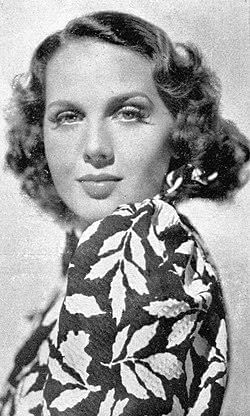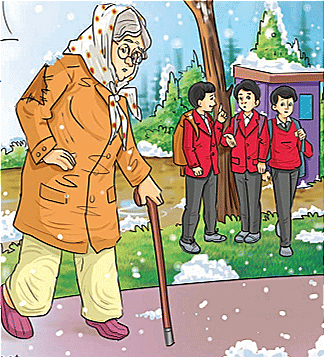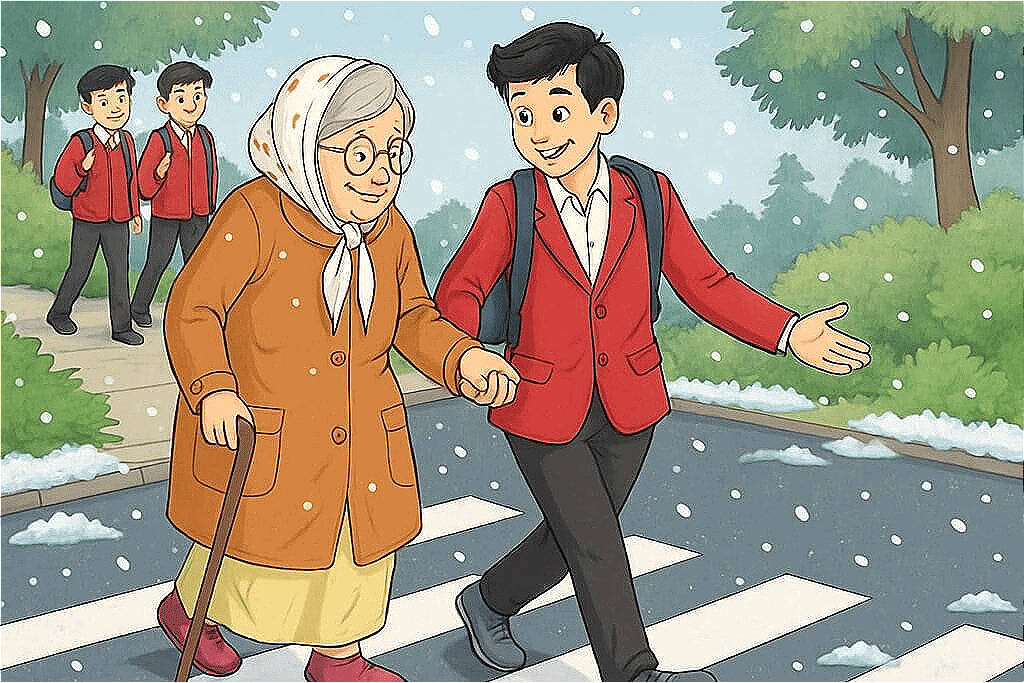Detailed Summary: Somebody's Mother | Chapter Notes For Class 8 PDF Download
| Table of contents |

|
| About the Poet |

|
| Key Points of the Poem |

|
| Explanation of the Poem |

|
| Theme |

|
| Message |

|
| Difficult Words |

|
About the Poet
Mary Dow Brine (1816–1913) was an American poet known for writing poems with strong feelings, gentle lessons, and love for family life. Many of her poems talk about kindness, sympathy, and doing the right thing. Her most famous poem is “Somebody’s Mother,” which teaches children and adults to be caring and respectful toward the elderly, especially when they are alone and in need of help.

Key Points of the Poem
- An old, ragged, grey-haired woman stands helplessly by a snowy, slippery street, unable to cross safely.
- Passers-by ignore her, showing society’s indifference to the elderly and weak.
- A group of school boys rushes past, laughing and playing, paying no attention to her.
- The woman is timid and afraid of carriages and horses, making her even more vulnerable.
- One cheerful boy stops, offering to help her cross the road safely.
- The woman places her trembling hand on the boy’s strong arm, and he guides her carefully.
- The boy proudly rejoins his friends, feeling happy and content, and reminds them that she is somebody’s mother, deserving respect.
- He reflects that he hopes someone will help his own mother if she becomes old and helpless.
- That night, the old woman prays to God, asking blessings for the noble boy who showed her kindness.
- The poem emphasizes kindness, empathy, and respect for the elderly, and shows how small acts can deeply impact lives.
Explanation of the Poem
Stanza 1
The woman was old and ragged and grey
And bent with the chill of the Winter’s day.
The street was wet with a recent snow
And the woman’s feet were aged and slow.
The poem opens by introducing an old, poor woman struggling through a harsh winter. She is frail, weak, and walks slowly, showing her vulnerability. Words like “ragged,” “grey,” and “bent” emphasize her physical weakness, while the “chill of the Winter’s day” symbolizes the harshness of life and society’s neglect of the elderly. The poet immediately evokes sympathy and highlights the struggles of old age.
Stanza 2
She stood at the crossing and waited long,
Alone, uncared for, amid the throng
Of human beings who passed her by
Nor heeded the glance of her anxious eyes.
The old woman waits at a busy street crossing, but no one notices her. The “throng of human beings” passing by shows human indifference and self-absorption. Her “anxious eyes” reflect fear and hesitation, highlighting her isolation and the lack of care society provides to vulnerable people. This stanza underlines the theme of neglect and the social responsibility humans have toward the elderly.

Stanza 3
Down the street, with laughter and shout,
Glad in the freedom of “school let out,”
Came the boys like a flock of sheep,
Hailing the snow piled white and deep.
A group of school boys comes along, full of life and excitement after school. They are compared to “a flock of sheep”, which shows their playful, careless movement. The poet contrasts the energy and joy of youth with the frailty of the old woman, highlighting how society’s young often remain unaware of the struggles of the elderly. This creates a vivid image of contrast between youth and old age.
Stanza 4
Past the woman so old and grey
Hastened the children on their way.
Nor offered a helping hand to her—
So meek, so timid, afraid to stir
Lest the carriage wheels or the horses’ feet
Should crowd her down in the slippery street.
The boys pass her without offering help, showing the general lack of awareness and compassion among people. The old woman is cautious, afraid to move on the slippery street because of danger from carriages and horses. This stanza emphasizes her vulnerability and society’s neglect, reminding readers that elderly people often face risks when they are ignored or overlooked.
Stanza 5
At last came one of the merry troop,
The gayest laddie of all the group;
He paused beside her and whispered low,
“I’ll help you cross, if you wish to go.”
Finally, one kind-hearted boy notices her and offers help. This act shows empathy, moral courage, and kindness. Even though he is young, he recognizes the woman’s difficulty and acts responsibly. The stanza conveys the importance of noticing and helping those in need, demonstrating that small gestures can make a big difference.
Stanza 6
Her aged hand on his strong young arm
She placed, and so, without hurt or harm,
He guided the trembling feet along,
Proud that his own were firm and strong.
The old woman holds the boy’s arm, and he helps her cross the street safely. This shows the connection between generations and emphasizes the use of one’s strength to protect the weak. The boy feels proud for doing a good deed, reinforcing the idea that helping others brings personal satisfaction and moral growth.

Stanza 7
Then back again to his friends he went,
His young heart happy and well content.
“She’s somebody’s mother, boys, you know,
For all she’s aged and poor and slow”,
“And I hope some fellow will lend a hand
To help my mother, you understand”
“If ever she’s poor and old and grey,
When her own dear boy is far away.”
The boy rejoins his friends happily and explains that the woman is “somebody’s mother”. He hopes that others would help his own mother if she were in a similar situation. This stanza teaches the lesson of empathy, responsibility, and moral duty, showing that everyone deserves care and respect. It emphasizes that acts of kindness should be universal and not limited by age or circumstance.
Stanza 8
And “somebody’s mother” bowed low her head
In her home that night, and the prayer she said
Was “God be kind to the noble boy,
Who is somebody’s son, and pride and joy!”
The old woman returns home and prays for the boy, expressing gratitude for his kindness. This ending emphasizes the reward of moral actions and the power of gratitude. It reinforces the idea that helping others, even in small ways, is noble and brings happiness to both the giver and the receiver. The poem concludes with a positive moral lesson about compassion and human decency.
Theme
The central theme of the poem is kindness, compassion, and empathy towards the elderly and helpless.
- It shows how society often neglects the old, poor, and weak, but even a small act of goodness can bring hope and comfort to them.
- The contrast between the busy, careless crowd and the boy’s selfless action highlights the importance of caring for others, especially those who are vulnerable.
- It also reflects the universal truth that everyone is “somebody’s mother” or “somebody’s loved one” and therefore deserves dignity and respect.
Message
- Small acts of kindness have great value and can touch lives deeply.
- We should treat the elderly with respect and compassion, as one day we too may need the same care.
- What we do for others today may come back to us or our loved ones tomorrow—the boy helps the old woman hoping that someone will help his own mother someday.
- True nobility lies not in wealth or power but in having a kind heart and empathy for others.
Difficult Words
- Ragged: Torn or worn out, showing signs of age.
- Throng: A large group of people gathered together.
- Meek: Quiet, gentle, and submissive.
- Timid: Shy or lacking confidence.
- Hasten: To move or act quickly.
- Trembling: Shaking slightly, often due to fear or cold.
- Proud: Feeling deep pleasure or satisfaction from one's own achievements.
- Content: Satisfied; feeling happy with what one has.
- Bow: To bend the upper part of the body forward as a gesture of respect.
- Prayer: A request or expression of thanks to a higher power.
- Noble: Having high moral qualities; honourable.
- Joy: A feeling of great happiness.
- Anxious: Feeling worried or nervous.
- Glance: A brief look.
- Carriage: A wheeled vehicle for people, often pulled by horses.
FAQs on Detailed Summary: Somebody's Mother - Chapter Notes For Class 8
| 1. What is the main theme of the poem "Somebody's Mother"? |  |
| 2. Who is the poet of "Somebody's Mother," and what is significant about her background? |  |
| 3. How does the poem portray the relationship between the young boy and the elderly woman? |  |
| 4. What literary devices are used in "Somebody's Mother" to enhance its emotional impact? |  |
| 5. What message does the poem convey about the treatment of the elderly in society? |  |





















